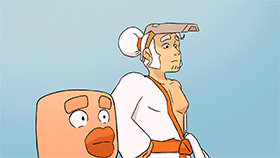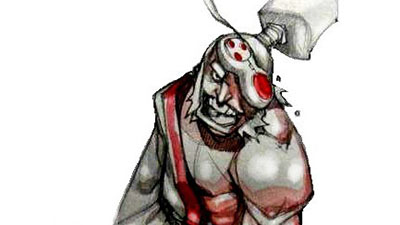
FOCUS ON
Article by Anton Guzman
[ Catégorie : Evènements |
Ajouté le 23-04-2025 ]


 >> French version
>> French versionTsuka : To mark the French cinema release of Ne Zha 2, I'm publishing this article written by my friend Anton Guzman (a great fan of donghuas*) to shed some light on the current animation market in China (a subject rarely covered by the Western media).


According to data provided by the film's creative team, Ne Zha 2 featured nearly 2,000 visual effect shots, an impossible scale for a single studio to handle. This herculean task was achieved through a production network comprising 138 companies, with over 80 percent, or 115 firms, being small and medium enterprises (SMEs) scattered across tech hubs like Beijing, Chengdu, Suzhou, and Shenzhen. These firms handled multiple production stages including animation development, visual effects compositing, and art design -- tasks that are often outsourced overseas by Hollywood studios. (People Daily's Online, 15.02.2025)
A growing market and industry
Ne Zha 2 has gone viral globally, unlike its predecessor (2019), which already set records. But times have changed when China sneezes, the world now reaches for a tissue. The film’s reception highlights the strides made by China’s animation industry, now buoyed by a strong economy (+5% growth), a massive cinema screen network (+90K screens vs. the U.S.’s 39K), controlled ticket prices (average 2024 ticket €5.525.77), and a vast audience, with animated film viewers estimated at 500 million, including 120 million regular viewers in 2024 (China Daily, May 30, 2024). The success of Ne Zha 2 and its global buzz - echoing last year’s unprecedented hype for the game Black Myth Wukong among gamers and media - has catalyzed worldwide attention for Chinese animated productions. And its box office run isn’t over yet! Having already surpassed $1.7 billion (+250 million tickets) to become the highest-grossing animated film of all time, Director Jiaozi’s film has now crossed $2 billion (most of it from China alone), joining Avatar, Titanic, and Avengers Endgame in the global box office top five.

For the world, this marks the beginning of recognition; for China’s animation industry, it confirms growth cementing its status as a global animation epicenter. When the first Ne Zha became China’s most profitable animated film in 2019 ($726M, a single-market record), the total revenue of China’s animation industry was estimated at $26.5 billion (Sustainable Development Strategy of Chinese Animation Industry / Qianzhan, June 2021 article). By 2023, it reached $41 billion, per Ma Li, President of the China Animation Association (Global Times, Nov.6, 2023). For comparison, The Association of Japanese Animations estimates its animation industry’s 2023 revenue at $22 billion (+14% YoY). The gap underlines the weight and size of the Chinese market, generating 80% of its animation revenue domestically (vs. Japan’s 51% from international markets). Ne Zha 2, alongside recent local hits like Jiang Ziya, Boonie Bears films, Chang’an, and Deep Sea (earning $50M–275M), as well as booming indie series and productions on platforms like Bilibili, Tencent, and Youku (catering to hundreds of millions of users), rides this growth wave.
Ne Zha 2’s success also marks a new milestone. You see, the Chinese have a five-year plan, the 14th, which runs until 2025 and aims to enhance animation quality, build brands, and strengthen the industrial chain. Goals include expanding cinema screens to 100K and boosting production quality via public-private financiallogistical support (e.g., dedicated loans) and mandatory productionpromotion quotas for major industry players.
China A Strategic Market for Japanese Animation
Another growth avenue—still underdeveloped—is the international market. Change is inevitable here, especially in relations with Japan’s animation industry, whose films perform equally well in Chinese theaters Your Name ($158M Japan$98M China), Suzume ($98M JP$111M CN), The First Slam Dunk ($103M JP$91M CN) and The Boy and the Heron ($52M JP$109M CN). Even minor titles thrive, like 2024’s Doraemon Nobita’s Earth Symphony ($25M JP$18M CN) and Look Back ($7.5M JP$7.3M CN), or the 2003 Detective Conan Crossroad in the Ancient Capital, which earned $32M in Japan and $20M in China… 21 years later!

Given China’s strategic importance, the two nations strengthened their 2018 Japan-China Film Co-production Agreement in late 2024 to boost joint projects and distribution. Some in Japan fear expertise leakage to China, but this is already happening organically as many skilled Chinese animators are already working in Japanese studios. For instance, some DirectorsAnimators behind Black Myth Wukong’s acclaimed animated shorts also work in Japan. As veteran producer Masao Maruyama warned in 2023 If more freedom (for Chinese animators) is unleashed, Japan will be overtaken in no time.
Five-year Keikaku
China’s animation talent pipeline has grown exponentially since 1993, when the Beijing Film Academy established its animation department. Since 2001, when only around 30 institutions in China offered animation programs, the number has grown to over 600 universities by 2023. (Liang, Tian, & Zhang, 2024, Development and Implications of Digital Animation Education Abroad. Open Journal of Social Sciences, #12). Some of these students even go on to study abroad via exchange programs as evidenced by the credits of many graduation shorts.
In 2023, Pan Jian, a professor at Zhejiang University and Vice-President of the Animation, Comics, and Games Professional Committee of the Chinese Film Critics Association, outlined three major eras in the history of China’s animation industry in his book Trajectory The Development of the Animation Industry and the Evolution of Animation Art in China (Science Press)
- The Cinematic Era (pre-1949), when animation, marginalized by limited production, relied on live-action cinema.
- The Pre-Industrial Era (1949–2004), defined by a planned economy, where even the cultural reforms of the 1990s failed to achieve effective industrialization due to insufficient output.
- The Industrial Era (2004–present), characterized by the rise of the market economy and cultural industries.
Pan further divides the Industrial Era into three phases global expansion (2004–2011), qualitative transformation (2012–2019), and new media-driven development (2020–present).
The 2019 release of Ne Zha marked the end of the Industrial Era’s second phase, and it is highly likely that Ne Zha 2 will similarly conclude the third phase while foreshadowing a new era. This next stage is expected to emphasize international expansion and the growing use of AI across production stages—a technological shift already underway.
The 15th five-year plan (2026–2030) is anticipated to shed further light on these developments.
Anton Guzman
* "Donghua" means Chinese animation
* "Keikaku" means plan.
 >> French version
>> French version
Les autres Focus On : (classés par mises à jour)
> Hideaki Anno Exhibition
> Satoshi Kon
> Jérémie Périn
> Jamie Hewlett
> Nemiri Book
> Little Witch Academia - Key Animation Book
> Inktober 2016 - Yohan Sacré
> Yoshinori Kanada Special
> Momentary - The Art of Ilya Kuvshinov
> Pocket Knight (Valentin Seiche)
> Art of Yoh Yoshinari - Tezuka Characters
> Bertrand Gatignol
> Merwan Chabane
> Animation From Korea
> Frères Nicolas
> Koji Morimoto
> Tatsuyuki Tanaka
> Masaaki Yuasa
> Kazuto Nakazawa
> Takashi Nakamura
> Takeshi Koike
> Hiroyuki Imaishi
> Peter Chung
> Studio 4°C
> Pierre Coffin
> Robert Valley
> Catfish Deluxe
> Interview Satoshi Kon
> Philippe Buchet
> Kévin "Trantkat" Hérault
> Juanjo Guarnido
> Barbucci & Canepa
> Gérald Parel
> Enrico Marini
> Kamikaze Douga
> Gif-Animation
> Katsuya Terada
> Corneil & Bernie - Making-Of
CatsuKuts
Stimulations du moment
Le Capsuka
Catsuka?

Catsuquoi ? ...
Voir la page À propos
et la timeline
Catsuka est un site indépendant non lucratif, sans aucune pub depuis sa création il y plus de 24 ans. Si vous souhaitez soutenir mon travail, vous pouvez souscrire à mon Patreon, ou faire un don via Paypal pour aider aux frais d'hébergement. Merci !
English : Catsuka is an independent website with no advertising, I don't earn any money. If you like my work, you can help me my supporting my Patreon, or make a Paypal donation to pay hosting service fees. Thanks!

Want to support Catsuka ?
English : Catsuka is an independent website with no advertising, I don't earn any money. If you like my work, you can help me my supporting my Patreon, or make a Paypal donation to pay hosting service fees. Thanks!

P3 (Pierrick le poulpe Puissant)












































